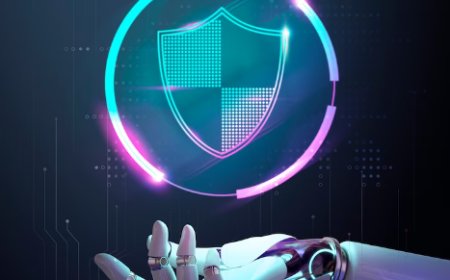Understanding the Types of Data in Data Science
Explore the essential types of data in data science: structured, unstructured, qualitative, quantitative, nominal, ordinal, discrete, and continuous.

The amazing rules of data science use various data types to make judgments and uncover useful data. For anyone interested in diving further into data science, understanding the various types of data is essential. Understanding how data is collected, processed, and analyzed using various data science technologies is made easier with the use of this information, which is included in the fundamentals of data science. Each sort of structured, unstructured, or semi-structured data has a specific function in various analytical contexts. Understanding the Different Types of Data in Data Science will help you use data more efficiently to create precise models and insightful conclusions. We'll walk over all you need to know in this blog post so that you can understand the types of data in data science and how they fit into the overall order of things.
Types of Data in Data Science
Section 1: Structured Data
Information that is organized in a predefined manner, usually in the form of a table or spreadsheet, is referred to as structured data. This kind of data can be kept in databases and is easily searchable. It includes data types that are easy to use and analyze, like dates, numbers, and strings, all of which have clear meanings.
Characteristics of Structured Data:
Structured data has several key characteristics that make it useful and manageable.
Format: Structured information is logically grouped into rows and columns.
Easy to Search: Because of its structure, finding and retrieving specific information is a breeze.
Stored in Databases: For effective data management, databases that use SQL are frequently used to store data.
Clear Data Types: Contains text, dates, and integers, among other well-defined data kinds.
Data Integrity: By using validation rules and restrictions, structured data helps ensure that the data is accurate. This indicates the data's accuracy and dependability.
Scalable: As data volumes increase, structured data may be expanded with ease. It is therefore suitable for large datasets.
Examples of Structured Data
Structured data is easy to read and analyze because it is arranged in an expected, clear way. Spreadsheets such as Excel and SQL databases, customer data in CRM systems, financial data in accounting software, retailer inventory lists, and travel calendars are a few examples. Because this kind of data is organized neatly into rows and columns, it can be easily managed and searched.
Section 2: Unstructured Data
Information without a preset framework or organization is referred to as unstructured data. It contains many different kinds of data, including emails, text files, posts on social media, videos, and pictures. Unstructured data is more difficult to look for and analyze than structured data because it is not organized into rows and columns. Despite this, unstructured data is often utilized in domains such as sentiment analysis, picture identification, and natural language processing since it contains valuable data. Rich, full information that structured data might overlook can be captured thanks to unstructured data's flexibility.
Characteristics of Unstructured Data:
No Predetermined Format: There is no set structure or arrangement for unstructured material. It can take many different forms, including text, pictures, audio, and video.
Diverse Data Types: There are many different formats that can be used to store and create different kinds of data, such as documents, emails, social media postings, images, and videos.
Lack of Organization: Unstructured data isn't logically placed in rows and columns the way structured data is. This increases the difficulty of searching and analyzing with conventional techniques.
Large Volume: Because unstructured data is gathered from a variety of sources, such as social media, sensors, and gadgets, it frequently has a large volume.
Flexible: It can collect data in an additional and hidden manner since it can capture a broad range of information without having to fit it into an established framework.
Complex to Analyze: Unstructured data is difficult to handle and analyze because it does not have structure. To address this, specific tools and methods are needed.
Examples of unstructured Data
Unstructured data is present in a wide range of common sources. Emails, posts on social media, photos, videos, text files, and audio recordings are a few examples. Because this kind of material lacks a predetermined structure, searching for and analyzing it is more difficult. Nevertheless, unstructured data is rich in insights and useful for a wide range of tasks, such as reading natural language from text documents, identifying patterns in photos, and deciphering customer moods.
Section 3: Semi-Structured Data
Data that is in between structure and unstructure is called semi-structured data. Even if data doesn't fit into conventional rows and columns, it is nevertheless somewhat organized thanks to XML and JSON files that have keys or tags. Because of this, it is easier to handle and more versatile than unstructured data. Semi-structured data is frequently found in file metadata, email systems, and online data. It has a good balance, which makes it helpful for a variety of uses.
Characteristics of Semi-Structured Data
Flexible Structure: While the format of semi-structured data is flexible and does not strictly follow rows and columns, it nevertheless uses tags or keys to arrange the data.
As an example: XML and JSON files are popular examples of data that has been labeled with unique IDs.
Easier to Search: Because semi-structured data has tags and markers, it is easier to search for and analyze than unstructured data, even though it is not as simple as structured data.
Variable Data kinds: A single dataset may contain several different data kinds, including text, numbers, and multimedia.
Self-Describing: Semi-structured data frequently has a self-describing structure, which means that it contains metadata that offers background and interpretation.
Integration-friendly: It is frequently utilized in document storage systems, web data, and APIs, which facilitates easier integration with a wide range of applications.
Scalable: Without a strict schema, semi-structured data can accommodate new kinds of information and develop and adapt more readily than structured data.
Examples of semi-structured Data
Semi-structured data is present in many different contexts. Examples are JSON files and XML files, which are frequently used for system-to-system data interchange. Emails fall into this category as well, with their headers and bodies. Semi-structured files include server log files, HTML-tagged web pages, and even some kinds of spreadsheets. This kind of data finds a happy medium between providing flexibility and having some structure.
In conclusion, anyone working in data science needs to have a thorough understanding of the many forms of data, including semi-structured, unstructured, and structured data. Every form of data is valuable in a variety of analytical situations due to its particular characteristics and applications. Semi-structured data strikes a balance with its flexible yet structured nature, unstructured data delivers rich, detailed information despite its lack of organization, while structured data is well-ordered and manageable. Working with these diverse data types allows for improved data analysis, management, and the development of precise models and insights in data science.




































